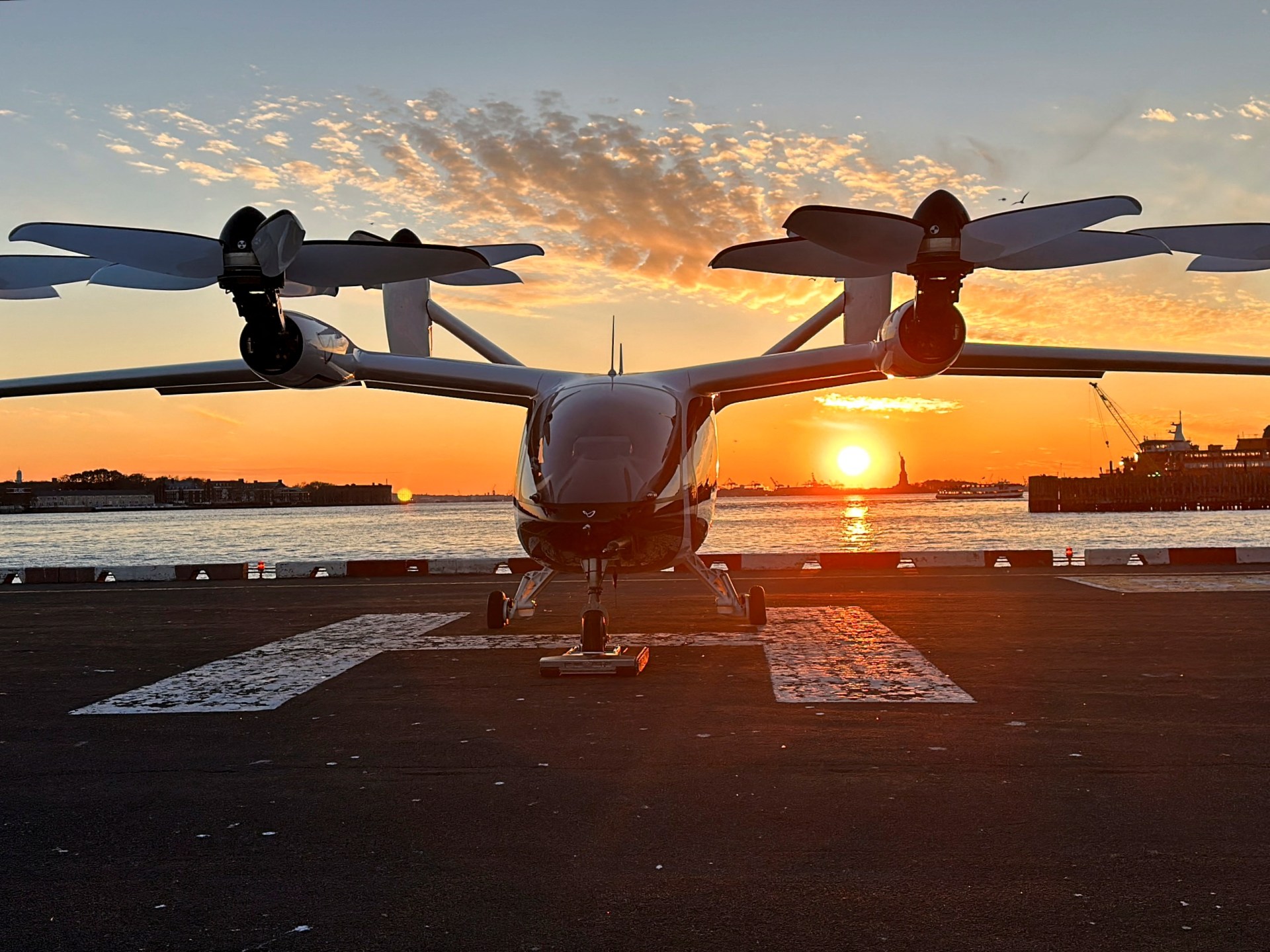Air taxi growth demands efficient vertiports and traffic control systems

The air-taxi market is predicted to grow exponentially by the end of the decade, but experts have warned that its future depends on a well-planned network of vertiports that would need to be integrated into existing infrastructure and supported by advanced air traffic management systems.
By 2029, the air-taxi market is predicted to grow to $80.3bn from the $4.9bn that it was worth last year, according to Spherical Insights, a market research firm. This market demand is “driven by the need for an alternative mode of transportation and the increasing problem of traffic congestion in metro cities”, a report by Mordor Intelligence said.
However, despite the interest and demand, electric vertical take-off and landing aircraft (eVTOL), low-altitude aircraft that can travel between cities and airports avoiding traffic, face a number of challenges before becoming a reality.
“Air mobility is set to transform our skies, much like how cars revolutionised ground transportation in the 20th century,” Amad Malik, an AI and aerospace expert, told Al Jazeera.
“As this technology matures, we’ll see a gradual introduction of various flying vehicles, from small delivery drones to larger air taxis and even flying ambulances. Keeping all this traffic safe and conflict free is going to become a big challenge.”
As well as needing to secure regulatory approval and convince consumers they are safe, eVTOLs need infrastructure for landing and take-off – vertiports.
Air taxis in the Middle East
Aviation news outlet Airports International, citing industry stakeholders, predicts that Advanced Air Mobility (AAM) will only “become a reality in North America and Europe later this decade”. However, it added that “air taxis will be flying passenger services in the Middle East within a couple of years”.
Britain’s Civil Aviation Authority said it was launching a consultation on how these eVTOL airports would fit into existing small airfields, and how they would operate safely and efficiently.
Dubai saw vertiport developer Skyports Infrastructure sign a deal with a Dubai-based provider of paid public parking facilities, to provide parking facilities for vertiports, according to IoT World Today. Dubai’s initial AAM network will consist of four vertiports – at Dubai International Airport, Palm Jumeirah, Dubai Downtown and Dubai Marina.
“We will see more vertiports being developed or planned in the short term, particularly in congested areas where helicopter and traditional aerial transportation access is limited,” Nicolas Zart, founder of Electric Air Mobility, told Al Jazeera. “Initially, these vertiports may be located on the outskirts of major cities as they test the concept of AAM before moving into urban centres.”
With these eVTOLs touted as the future of urban air mobility, the market has not only gained a lot of attraction but also investment.
Earlier this month, Toyota Motor Corporation said it will invest another $500m in Joby Aviation to support certification and commercial production of Joby’s electric air taxi. In July, Chrysler parent Stellantis said it would invest an additional $55m in Archer Aviation.
Joby’s electric air taxi is on display at Vanderbilt Hall in collaboration with airline partner @delta and mobility partner @uber! ???? Visitors can explore the aircraft and experience VR flight simulators.
Today 3-6pm, Tomorrow 8-11am, Fri 8-11am and 3-6pm, Sat 10am – 5pm pic.twitter.com/utXh1EdmYy
“Managing this new aerial traffic will be like upgrading from a small-town intersection with a few stop signs to a complex city-wide traffic system with thousands of vehicles. Current air traffic control systems are designed for a limited number of large aircraft, not swarms of smaller vehicles,” Malik said.
“While there are initiatives focusing on drones, we need a comprehensive solution. It’s like having separate rules for cars, motorcycles and bicycles on the same road. It might work with low traffic, but becomes chaotic as volume increases. Emergency flying vehicles will need priority lanes in this new aerial highway. Without proper management, increased air traffic could potentially slow down critical services.”
While air taxis are also aimed at the “wealthier customers” for now, aircraft manufacturer Vertical Aerospace claims they could end up being as cheap as an Uber ride once production grows. This would, in turn, see an increase in the low-altitude air traffic.
“Historically, new technologies and services often begin with military applications followed by wealthier consumers. This initial adoption drives mass manufacturing, ultimately making the technology accessible to a broader audience,” Zart said.
Source: Aljazeera
Leave a Reply